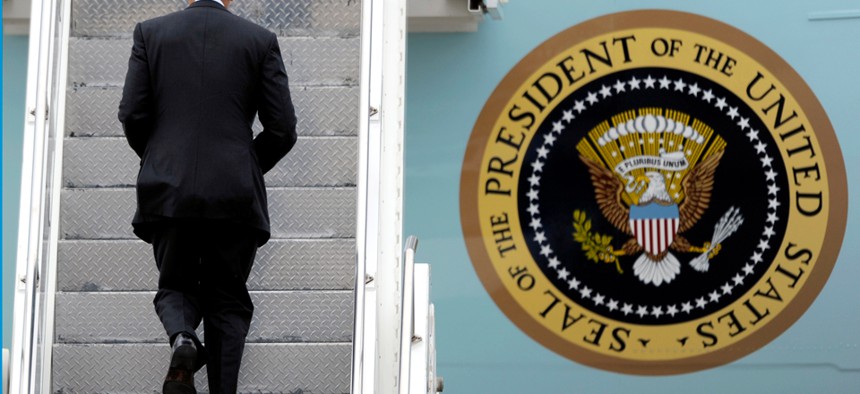Democrats Face Unfair Fight in Midterms
Democrats face a heavy headwind going into the midterms due to the president’s low approval ratings.
Generally speaking, the further into a U.S. president’s tenure in office one gets, the less volatility there is in that president’s job-approval rating.
It’s pretty logical that 1,979 days into Barack Obama’s presidency, the number of people most inclined to approve of his performance has stabilized, as has the number of those disposed to disapprove of him. Given that Obama tends to evoke particularly strong emotions with bedrock supporters and equally adamant opponents, arguably more people than usual have locked in their opinions. And those who are undecided by this point are the folks who have pretty much checked out of politics and are unlikely to come down on one side or the other. Simply put, there are few people left who are ambivalent about Obama’s performance. We see large variances at this point only when we compare the results of one pollster to another. These variances are likely the result of individual firms’ unique methodologies and sampling idiosyncrasies; they do not represent the genuine changing of minds.
With the Gallup Organization sampling a little more than 500 adults per night, around 7,500 in a week (with a margin of error of plus or minus 1.13 with a 95 percent confidence level) and 15,000 in a month (margin of error +/-.8), the larger samples are more accurate. Each weekly poll consists of at least three times more interviews than the typical national poll of between 800 and 1,000 respondents; thus with Gallup using uniform methodology, it is the most useful poll to track the subtle shifts that do actually occur.
Obama’s approval rating since his 2012 reelection has declined gradually through 2013. It picked up a bit in 2014, to an average of 44 percent approval and 51 percent disapproval for the months of April and May. To be clear, these are bad approval ratings, but they have been worse, and they now appear to have stabilized in the spring of this year, at that 44 percent level. It is not that surprising, though, that the aftermath of the controversy surrounding the administration’s trade of five Guantanamo detainees for Army Sgt. Bowe Bergdahl, combined with the disclosures concerning the Veterans Affairs health care system, would move the president’s approval and disapproval needles. Over Gallup’s seven-day sampling period ending Saturday, June 21, Obama’s job-approval rating was 41 percent (with a disapproval of 54 percent). During the week of June 9-15, the same poll showed the president with an approval rating of 42 percent—noteworthy because for the full months of April and May, Obama’s approval rating remained at 44 percent.
In politics and polling, as in real estate, underwater or “upside down” approval ratings are not a good thing for an elected official. Moreover, in the case of a president heading into a midterm election, with the midterm often said to be a referendum on the incumbent president, this is a bad thing for the president’s party. Every point decline creates just a bit more headwind against Democratic candidates facing difficult races across the country. Specifically, this makes the challenge even more onerous for the Democratic candidates where the party is defending U.S. Senate seats in the six states that Mitt Romney carried by 14 points or more in 2012: incumbents Mark Begich in Alaska, Mark Pryor in Arkansas, Mary Landrieu in Louisiana, and appointed Sen. John Walsh in Montana, along with Democratic candidates in open seats in South Dakota and West Virginia. While that is somewhat self-evident—a lot of people talk about the Democratic challenge in holding onto their Senate majority—it seems that this problem is often understated. Persuading people who disapprove of a sitting president to still vote for a Senate candidate of that president’s party is a real challenge in a midterm election.
Compounding this problem for Democrats is the makeup of the midterm electorate. This midterm-voting group is older, whiter, more conservative, and more Republican than those who turn out in a presidential election. Young and minority voters who flocked to the polls in 2008 and 2012 are very difficult to motivate for a Democratic candidate who very clearly isn’t Barack Obama. They got revved up for Obama in a presidential election year, but can endangered Democrats now get these voters excited for them in a midterm as well? The opposition is galvanized, but getting these more sporadic voters to turn out is far harder.
Those who seem to think that this election is a fair fight, taking place on a level playing field, are badly mistaken.
This article appears in the June 24, 2014 edition of NJ Daily as Not a Fair Fight.



